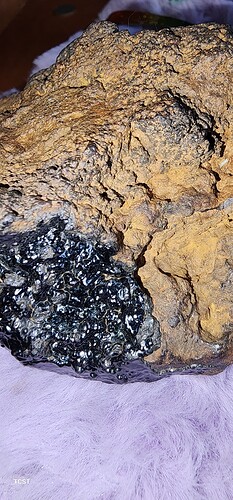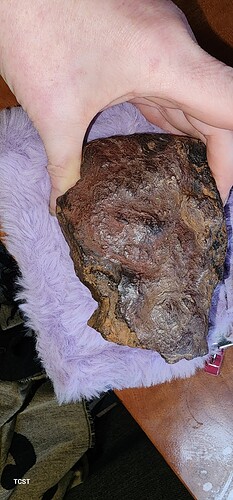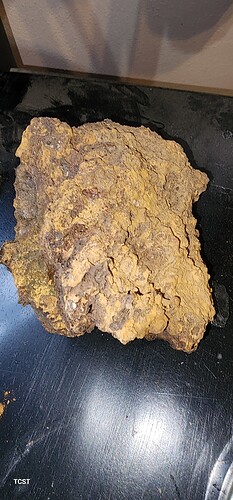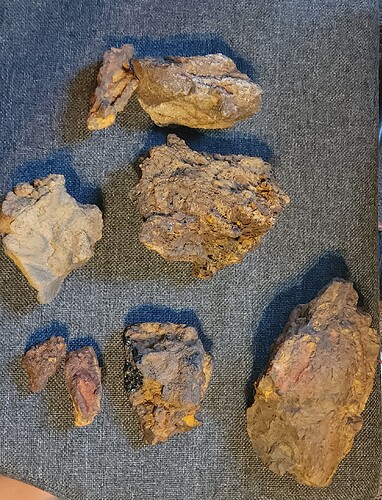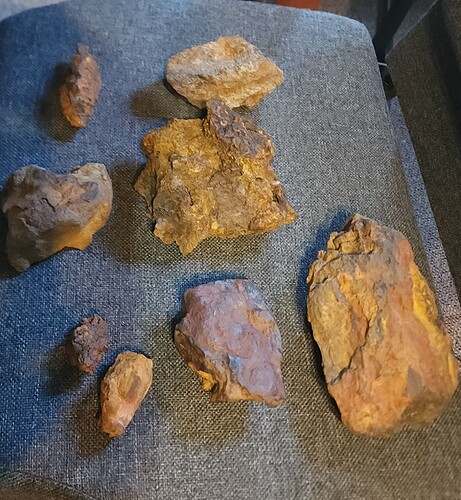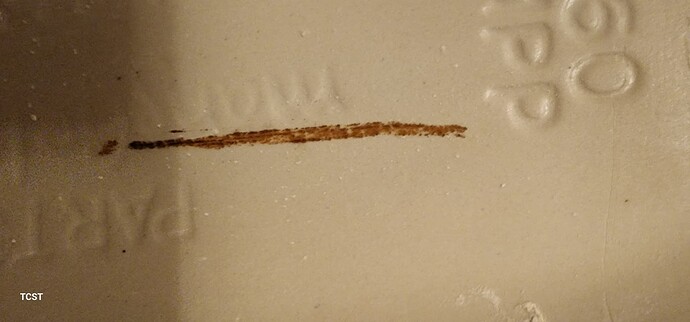I think the is onyx… its opaque far as i have been able to tell. Amd was … before I beat it with a hammer.  … a small portion of an absolutely massive dragon egg geode.
… a small portion of an absolutely massive dragon egg geode.
It had us completely confused because it was intact had water in it an when it finally opened was an EXPLOSION OF(what i can only assume was WET CAMBRIAN SAND LIKE BITS.
It was a part of a geode full of geodes
It is VERY heavy and a solid black feels slightly soft for a quartz so i can see it being a hardness of 7. It has a hard red outer and a chaotic center that is very difficult to clean.
Any help is appreciated
1 Like
This is not onyx. Most of what is sold as Black Onyx is actually dyed grey chalcedony. True Black Onyx is found in Saudi Arabia and has bands of black and white that can be carved for cameos. It could possibly be Obsidian or more out of this world, Tektite which is found in meteors.
Oh i was aware of the banding but I Also saw where it can be found in rather thick solid black sections on rare occasions.
This is from a iron heavy area in a lake in Lancaster County Pennsylvania my girlfriends and I found numerous large pieces spread rather far apart.
Black Onyx and Sardonyx (red) are both flat layer stones. Chalcedony (which includes Agate) are concentric layer stones which form inside Geodes.
1 Like
My first thought based on the black part thats open is it looks like botryoidal hematite. Could be wrong but the outside looks to be very oxidized like it contains a fair amount of iron, possibly a mix of goethite and hematite given your location. Try getting a hardness on the black part and if its 5-6 it will help narrow down the choices. Also a streak test for hematite on the should be deep red-brownish red and specific gravity ranges from 4.95-5.26. Hope this helps!
2 Likes
I also had a thought, could it be black turmoline
Sadly, I don’t have a piece anywhere near smallng enough to test specific gravity. I would need to use a full size scale like a person scale. Because none of the pieces I have are smaller than my hand. But now I at least have some things. I can look at which is so helpful, thank you.

 🫨:exploding_head:
🫨:exploding_head:
Omg i always have known angular or silvery hematite i had never seen this before. I think you are 100% correct botryoidal hematite.
You can use a digital kitchen scale. They are fairly inexpensive.
Yes to me it is obsidian. One side looks like a meteorite the other side simply a schist. Obsidian is actually just glass like we say desertglass
If it is a hematite, try a magnet if it is magnetic, that will help determine what the mineral is
1 Like
It looks and acts exactly like botryoidal hematite it originally looked like an geode but lately seemed to resemble a dragon egg with banding all thru it including other geode in it it is not magnetic even slightly.
1 Like
Too hard steal doesn’t scratch
it scratch test
red on outer edges
black on inside
The outside was softer
The inside was hard to scratch test
Both shows absolutely no damage from a steel blade the black area is so hard it was sliding off it like the stone was greased
I’d like to make a little correction to your statement. As an avid collector of anything to do with Earth and/or Space, I know that Tektites and Impactites are created by the impact of Meteorites with Earth. They are Earth-born material that has been thrown out of a crater or impact site from an asteroid or a meteorite but they are not a meteorite themselves.
Tektites are often black and have a slightly shiny lustre but they can come in several colours. They are usually, glass-like. They are also often elongated like a stretched tear drop. When an asteroid or meteoroid impacts with Earth they can send tons of material up into our atmosphere. That material is very hot and often molten. They rarely go beyond our atmosphere and thus do come back to Earth. Moldavite and Lybian Desert Glass for example are also a form of Tektite.
An Impactite is Earth Material that has been morphed by the Heat and Pressure of an impact. An impactite may get thrown out of the impact site as ejecta but rarely get anywhere near our upper atmosphere, if they move from the impact site at all. Most impact sites do not create or leave a crater.
1 Like
My guess is this is HEMATITE which can also have a Botryoidal-like surface on it (bubbly-looking).
If you Google Hematite I’m sure you will agree that this is what you have before you.
Not tektite fails the tests
Honestly steel is not enough to scratch it so it could be but i don’t know. It is less rounded as i clean it. It had actual takem on a redish purple hue as well.
I posted a video with known details on a private link
I hope it helps
Under uv and regular light
And microdiamonds confirmed!!
It may be the other lava port from my volcano
![]() … a small portion of an absolutely massive dragon egg geode.
… a small portion of an absolutely massive dragon egg geode.